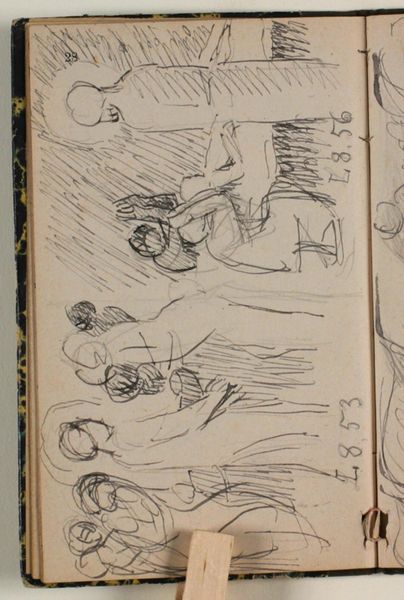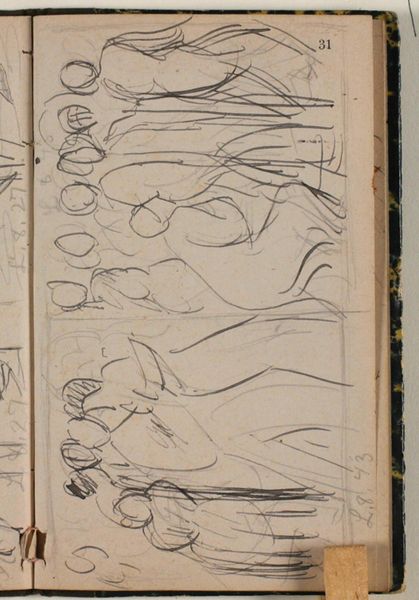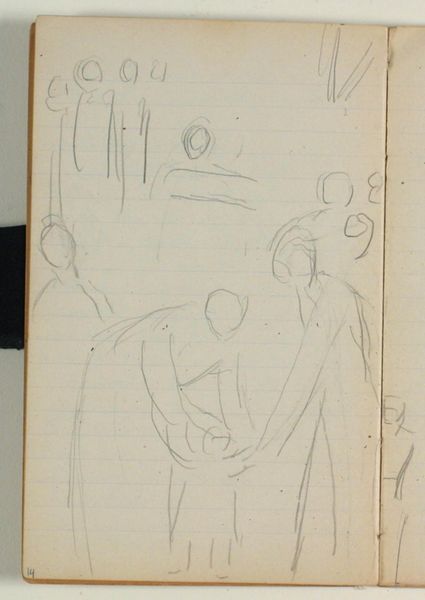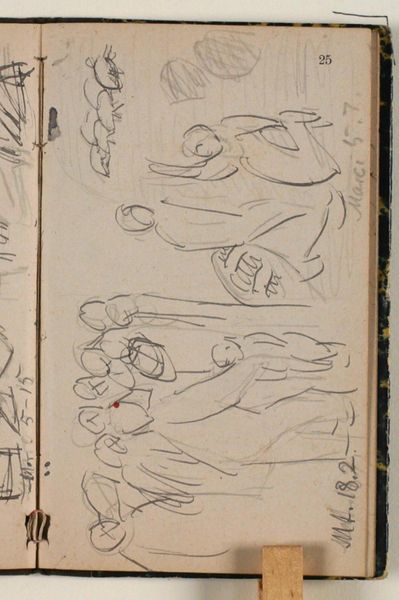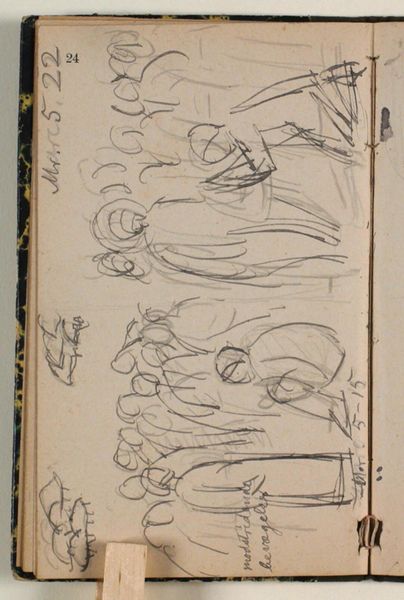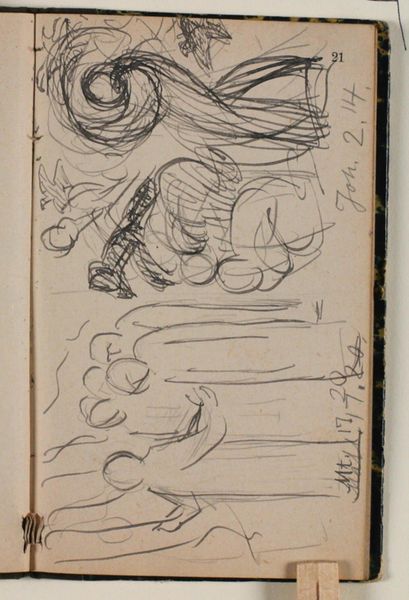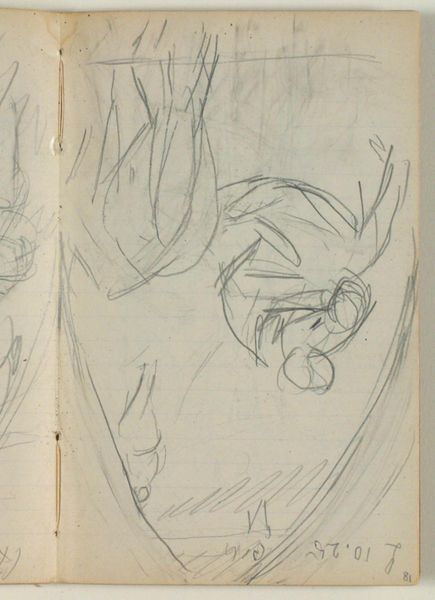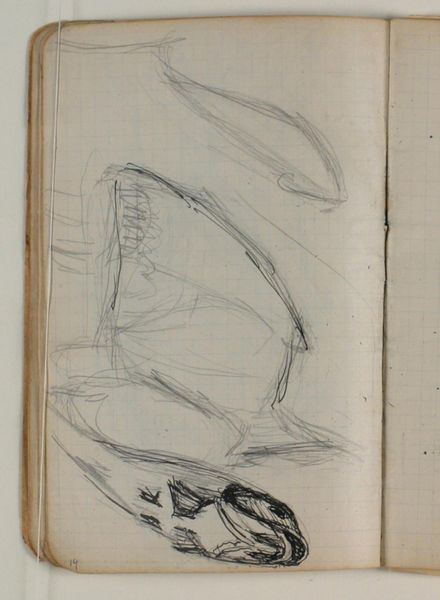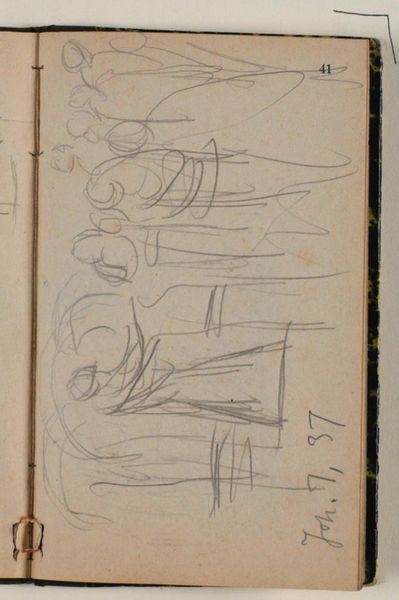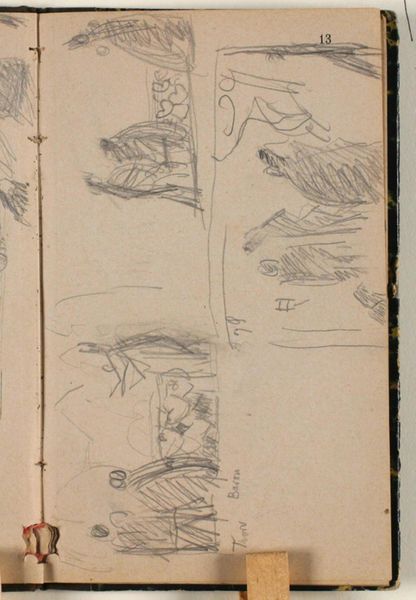
Udkast til bibelsk motiv. Den besatte i gerasenernes land 1864 - 1941
0:00
0:00
drawing, paper, pencil
#
drawing
#
medieval
#
narrative-art
#
figuration
#
paper
#
pencil
Dimensions: 153 mm (height) x 93 mm (width) (monteringsmaal), 153 mm (height) x 93 mm (width) (bladmaal)
Editor: We’re looking at "Udkast til bibelsk motiv. Den besatte i gerasenernes land" – a pencil drawing on paper by Niels Larsen Stevns, dating between 1864 and 1941. It seems like a page from a sketchbook, filled with figures in varying states of distress or repose. It's a flurry of lines, quite evocative in its incompleteness. What strikes you about the formal composition of this drawing? Curator: Initially, it’s the stark contrast between the delicate lines defining the figures and the almost aggressive hatching used to depict, I presume, clothing or drapery. Observe how this textural variation introduces depth and volume without resorting to traditional shading techniques. The lines suggest movement, a fleeting moment captured, hinting at a narrative without explicitly defining it. Note also how the placement of the figures, seemingly floating on the page, disrupts any sense of conventional perspective. How does this unconventional use of space contribute to the overall effect? Editor: It feels almost dreamlike, unbound by the constraints of reality, the figures freed from gravity and physical space. What is the purpose of this “freeing?” Curator: The spatial ambiguity throws emphasis onto the interplay of forms and lines. It's as if the narrative, which we can gather from the title to be a dramatic biblical scene, is subservient to the formal exploration of the figures themselves. Consider the way each figure is rendered with differing levels of detail. Is there a pattern or reason behind this selective emphasis? Editor: It seems that Stevns focused more on the figures central to the composition and gave less emphasis to figures located on the fringes, possibly a technique to draw the eye towards an implied focus of activity? Curator: Precisely! The composition guides the viewer, urging an appreciation of line, shape, and form independent of its explicit subject matter. That these are simply pencil lines, stripped bare on the page, allows one to engage directly with the artistry behind it. Editor: I see it! So, while it hints at a story, it really emphasizes *how* the story is being told, right down to the textures. It seems so fresh and immediate. Curator: Indeed. This close study has allowed us to decode how an image's meaning isn't necessarily bound to narrative; it's unlocked through an engagement with the formal relationships between its elements.
Comments
No comments
Be the first to comment and join the conversation on the ultimate creative platform.
